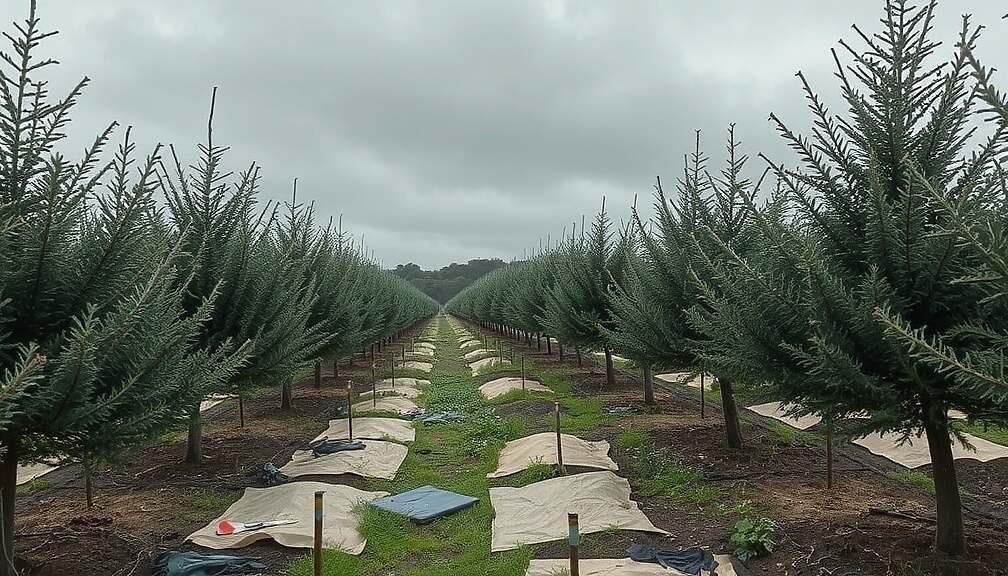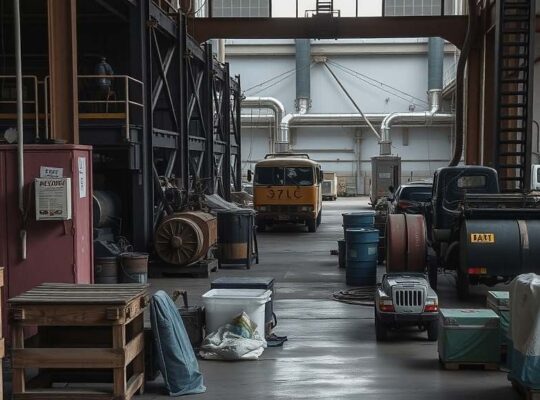Germany’s nursery sector is facing a concerning decline, according to newly released data from the Federal Statistical Office (Destatis). The number of operating nurseries has shrunk significantly, raising questions about the long-term viability of a vital component of the country’s agricultural landscape and green infrastructure.
In 2025, just 1,368 agricultural businesses managed a mere 15,350 hectares of nursery land, representing a 10.9% decrease-equivalent to 168 businesses-compared to the 2021 survey. This trend reflects a broader pattern of contraction, with a 20.2% reduction in the number of nurseries and a 17.5% drop in cultivated area since 2017. The data reveals a worrying trend, potentially linked to rising operational costs, labor shortages and shifting market demands.
The nurseries cultivate a wide range, from ornamental shrubs and trees to forestry seedlings and fruit bushes, including popular Christmas tree varieties. While 97.8% of nursery land is located outdoors, nearly half of the businesses utilize greenhouses or sheltered growing areas, primarily focused on cultivating high-value species.
A particularly notable development is the increasing emphasis on larger-scale tree production for parks, avenues and streets. Despite a 9.3% decrease in the number of nurseries involved in this specific sector since 2021, the area dedicated to growing these trees has expanded by a substantial 16.3% to 3,410 hectares. This suggests a potential strategic shift, or perhaps an effort to maintain output amidst a shrinking workforce, with existing businesses absorbing the workload.
However, the data also highlights areas of significant vulnerability. The cultivation of ornamental shrubs and broadleaf trees, crucial for landscaping and urban greening, has experienced a sharp decline – both in the number of businesses and the area cultivated since 2021. This could signal a weakening in demand for these plants or an inability of businesses to adapt to changing consumer preferences.
Forestry seedling production, a vital element for reforestation and ecological restoration, represents a second major category, covering 12.3% of the total nursery land. While the number of forestry nurseries has remained relatively stable, the area dedicated to conifer seedling production has shrunk considerably by 23.1% since 2021. This disproportionate decline in conifer production raises concerns about the future of Germany’s forest resilience given the ongoing challenges of climate change and tree diseases affecting these vital ecosystems.
Geographically, Lower Saxony remains the epicenter of Germany’s nursery sector, housing the largest concentration of nurseries and the most extensive cultivated area. However, the long-term sustainability of this regional specialization is called into question by the overall sector decline, leaving the region potentially exposed to economic challenges.
The data demands a deeper investigation into the drivers of this industry contraction. Policy interventions, including financial support, workforce development programs and incentives for sustainable practices, may be necessary to safeguard the future of Germany’s nurseries and secure the continued provision of essential plant material for landscaping, reforestation and horticultural endeavours. Failure to address these challenges could have significant ramifications for the country’s green infrastructure and its capacity to adapt to future environmental pressures.












